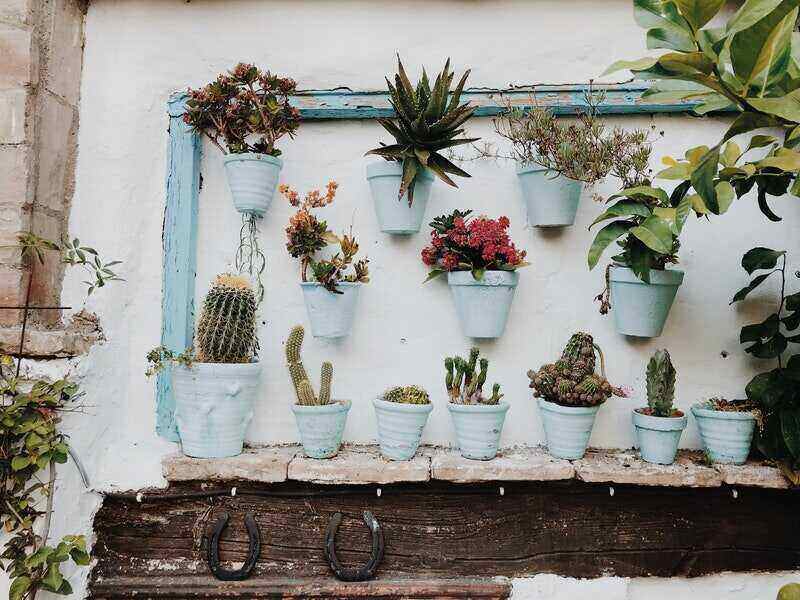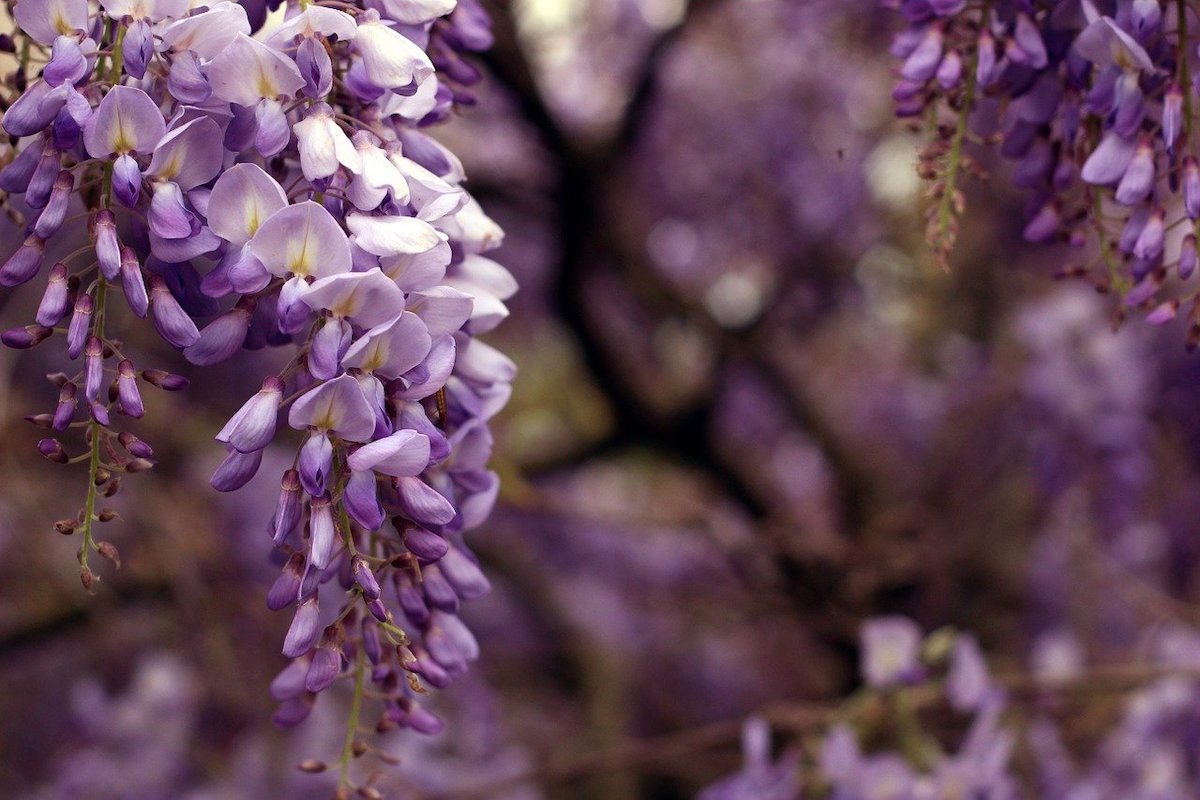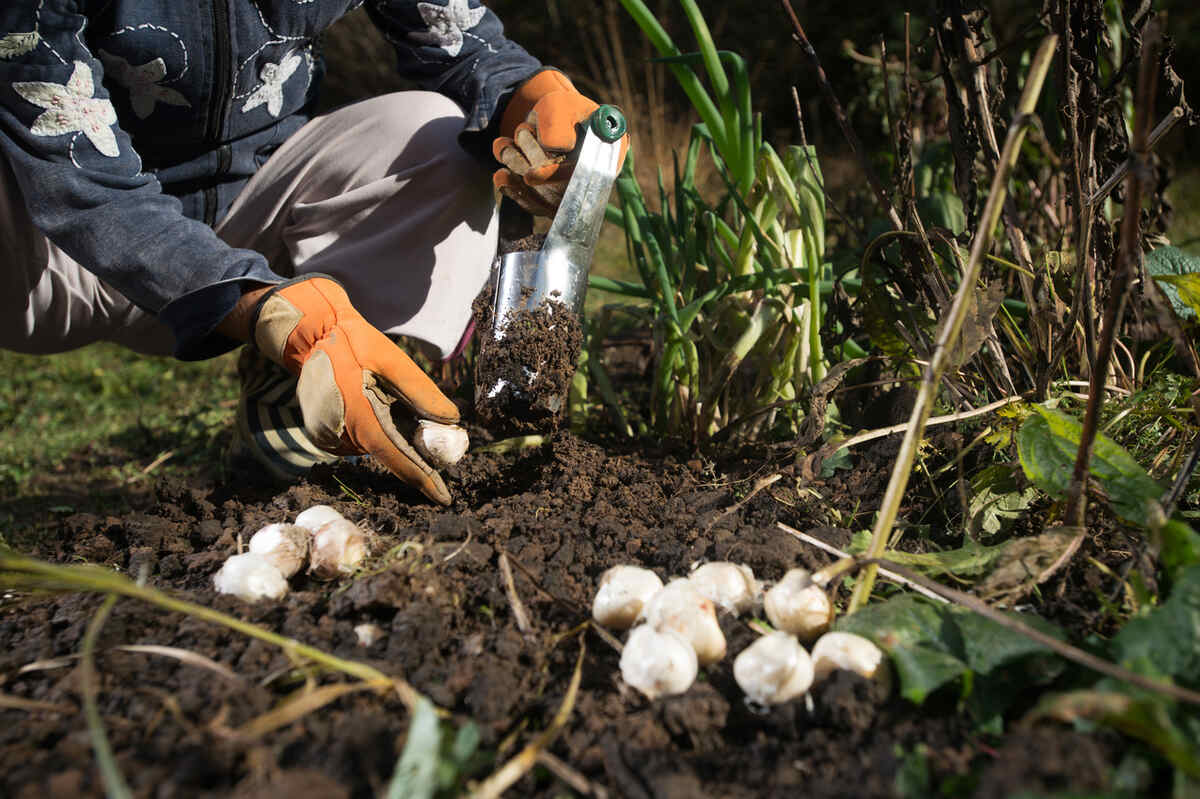
Fall’s arrival makes many of us feel sad that our gardening season is nearly over. But it doesn’t have to be that way! Fall gardening can include more than yard cleanup and winter prep. In fact, one of your garden activities can be to plant bulbs in the fall.
Planting bulbs in the fall is the primary way to ensure early spring colors. Some flowers bloom so early in spring that you must plant them in fall; waiting until spring would be too late. Also, many bulbs must be exposed to cold soil temperatures to force or encourage flowering. If you’re uncertain about which bulbs to plant, when, and how, keep reading.
Best Bulbs to Plant in Fall
Let’s start by choosing the best bulbs for fall planting. Some of these are spring-flowering bulbs, though a few bloom a bit later in the season.
Daffodils. Members of the narcissus family, daffodil bulbs erupt in shades of white and yellow in mid-March. Historically, the yellow daffodil symbolizes rebirth and new beginnings.
Iris. Hardy, reliable, and easy to grow, irises make beautiful arrangements of cut flowers. They also attract butterflies and hummingbirds to your yard.
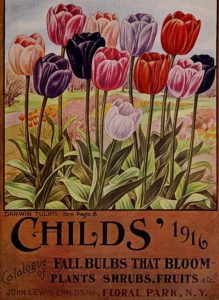
Tulips. A later bloomer, most tulips pop up after the grape hyacinths and daffodils have made their appearance. Note that all parts of the tulip plant are toxic to dogs, so take care to plant them away from areas that pets frequent.
Lilies. Known for their sweet, strong scent, lilies are a staple in many landscapes. These beauties bloom for weeks in the summer, adding color after other fall-planted bulbs have stopped blooming.
Anemone. Symbolizing fragility and love, anemone resembles some varieties of poppies but is much easier to grow and makes great cut flowers. The Japanese Anemone’s scent helps keep deer away from your garden.
Crocus. Available in shades of purple, blue, pink, yellow, orange, and white, the tiny crocus is one of the first flowers to blossom in the cold. Plant them by the dozens for a great show of color.
Grape hyacinth. The intensely fragrant grape hyacinth produces compact carpets of bright purple in early to midspring. Tiny flowers stand about 6 inches tall and spread easily.
Snowdrop. One of the first flowers to show in the spring, these little white bells often push through a light layer of snow. Hence, their name!
Scilla. One of the few bulbs that will survive in partial shade, scilla can be planted under shrubs or trees. They provide waves of brilliant blue color in early spring.
Winter aconite. Another yellow beauty, the winter aconite pops up in late winter or early spring, growing 3-6 inches tall. They are a deer-resistant plant and self-propagate through spreading seeds.
Allium. The allium family includes veggies such as onions, shallots, and garlic. Plant ornamental allium to add rodent- and deer-resistant plants that require little care and thrive in dry, sunny spots.
Choosing Flower Bulbs
To get the best from your bulbs, you need to start with high-quality specimens. When shopping, look for these things:
- Look for firm, plump bulbs with no soft spots, mold, or off odors. Also, make sure the bulb hasn’t sprouted yet.
- Buy the largest bulbs you can find. Bigger bulbs produce bigger flowers. However, if you are naturalizing (planting in informal plantings so bulbs self-propagate and spread freely), then you can purchase smaller bulbs.
- Make sure the resulting flowers are appropriate for your area’s plant hardiness zone.
When to Plant Fall Bulbs
Planting times for bulbs vary slightly depending on where in the United States you call home.
- For Northern climates, it’s best to plant in late September to mid-October, to get bulbs in the ground before the first frost. Make certain you plant before the ground freezes so the roots have a chance to grow. Tulips are an exception; as long as the ground isn’t frozen, you can plant these hardy bulbs as late as December.
- For Southern climates, plant bulbs in mid-October through November or until early December in the far South. The later you wait, the less time the bulbs have to establish themselves before colder temperatures set in.
How to Plant Bulbs in Fall
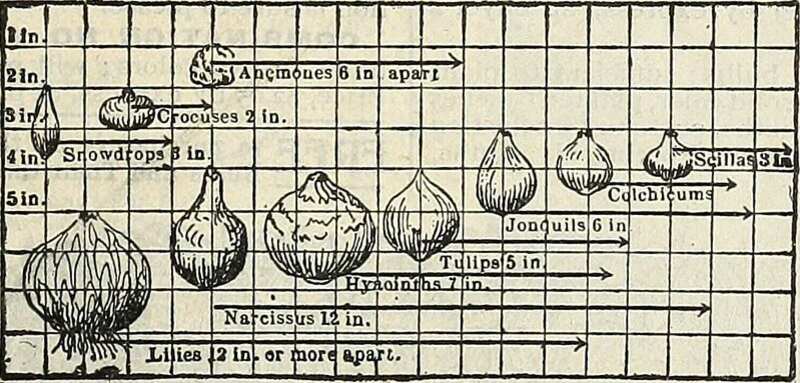
If you’re already familiar with planting other perennial or annual ornamentals, the steps to planting bulbs will seem similar.
Keep in mind that bulbs are difficult to tell apart, so keep the labels close by. That way, you can keep the yellow tulips separate from the red ones or prevent an errant daffodil from popping up in your irises.
- Check the area where you plan to plant bulbs. Do your bulbs need full sun, partial sun, or shade? Spring bulbs will bloom earlier if planted in a south-facing location.
- Prepare the flowerbed to make it light and friable. Bulbs need well-drained soil to keep from being waterlogged and possibly rotting. If you have clay soil, soil amendments are especially needed. Work compost or sphagnum peat moss into the top 8 to 10 inches of soil. That will add organic matter and improve drainage
- Adding fertilizer before planting is also helpful. Generally, work a teaspoon of fertilizer into the soil for a planting of 5 to 10 bulbs. Be sure to follow the directions on the fertilizer and bulb packages.
- Determine the planting depth for each bulb type. The rule of thumb when planting flower bulbs is to bury them two to three times as deep as the bulb is tall. But check the bulb’s package for precise directions.
- Dig holes at the recommended planting depth. Set bulbs in the bottom pointy-side up and with the roots down. Specialized bulb-planting tools, available online or at gardening stores, include augur-style drills and tubular steel planters
If you’re unsure which end should go up, plant the bulb on its side. Through a process known as geotropism, the roots of most bulbs will make their way down into the soil while the shoots grow up.
- Fill in the hole with soil, tamping gently without packing the soil too much. Water well initially and then avoid watering through the winter unless you live in an area with very low winter precipitation.
Tips for Growing Flowers From Bulbs
A few steps will help your bulbs to bloom successfully in the spring:
In cold areas, cover bulbs with a couple of inches of mulch to protect them during the winter. Be sure to remove it in the spring.
Protect bulbs from rodents or other animals. Place a mesh or screen over the soil surface to prevent critters from digging.
Leave the foliage in place until it turns yellow or brown. This helps the bulb prepare for next year by storing food.
Dig up tender summer blooming bulbs — also known as “spring bulbs” — in the fall so they don’t succumb to winter temperatures. Replant them in the spring. Spring bulbs include:
- Canna
- Amaryllis (Caution: these are toxic to dogs and cats.)
- Calla (one of many outdoor potted plants to bring indoors for winter)
- Dahlias
- Elephant ear
- Caladium
- Ranunculus
- Gladiolus (Night gladiolus is a good night-blooming plant for a moon garden.)
Tips For Designing Your Garden With Bulbs
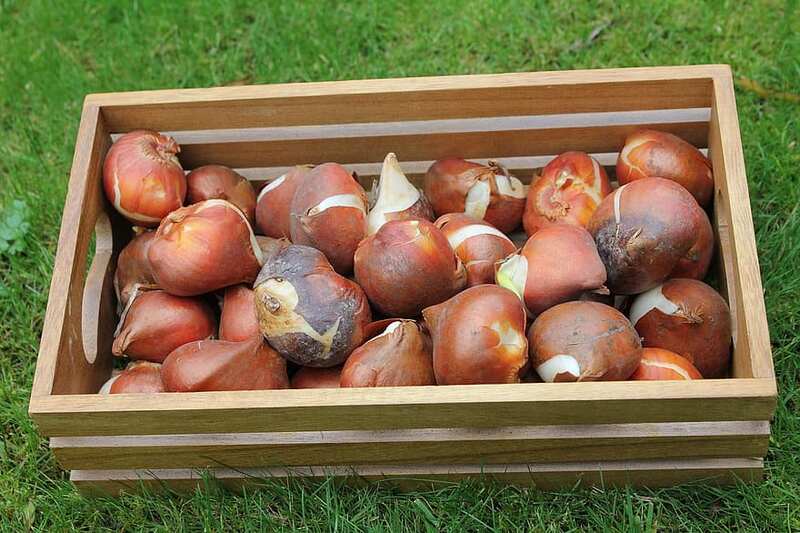
Flower bulbs can be used to develop any type of garden you choose — from one that showcases its colors during the day, or a moon garden that graces your evenings. A few suggestions:
Don’t plant in a straight line. Plant in groups or clumps for the most impact visually. If possible, try for at least 12 bulbs in a group.
Pay attention to height. Plant bulbs that produce taller flowers to the back, shorter flowers in front. (Though keep blooming times in mind.)
Add companion plants with different bloom times (early spring, late spring, early summer, late summer) in various heights and colors. That will extend color well past your spring garden.
Bulbs can be planted in groups, along borders, or in rock gardens. Or you can plant them under deciduous trees; they’ll finish blooming before the tree sprouts its leaves.
FAQ
One method is to sprinkle repellents, such as cayenne pepper, red pepper flakes, and paprika, around the planting area. Or try planting garlic or spreading coffee grounds. However, Smithsonian Gardens’ Horticulturist Christine Abelow says the best solution is to cover the planted space with wire mesh. Remove before the bulbs begin to sprout.
Generally, no. Usually, soaking bulbs in a rooting solution is used when forcing them to grow inside. However, to improve their chances of growth, some gardeners soak the hard anemone and winter aconite bulbs overnight to soften them.
Not if you live in a northern state; tulips should get the cold time they need to grow properly in the spring. (Times vary according to area, but the range is 8-15 weeks.) However, if you live in a southern state with mild winters, your tulip bulbs need to be chilled before planting.
Some nurseries and garden centers sell the bulbs chilled. Or you can try keeping them in your refrigerator (not the freezer) for 6-8 weeks. Put them in a mesh bag, and don’t store them near apples — they give off ethylene gas that will cause the bulbs to rot.
When to Call in a Professional
While planting bulbs in the fall can bring colorful rewards in the spring, finding time to hit that planting window can be a challenge. Or perhaps you’re unsure about the best flowers to use or the best places to plant those bulbs. In that case, consider calling a landscaping professional. A local pro can help you design the perfect spring garden and take care of all the planting and maintenance for you.
Main Image Credit: Adobe Stock
Additional sources:
K-State Research and Extension
University of Georgia Extension


